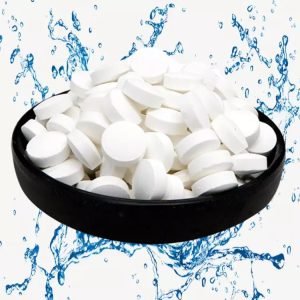Amino Acid Selection for Peptide Synthesis
# Amino Acid Selection for Peptide Synthesis
## Understanding the Basics of Peptide Synthesis
Peptide synthesis is a complex process that requires careful selection of amino acids to achieve the desired peptide sequence. The choice of amino acids plays a crucial role in determining the success of the synthesis, the purity of the final product, and its biological activity.
## Criteria for Amino Acid Selection
When selecting amino acids for peptide synthesis, several factors must be considered:
### 1. Side Chain Reactivity
The reactivity of amino acid side chains can significantly impact the synthesis process. Some side chains require protection to prevent unwanted reactions during coupling steps. For example:
– Lysine and arginine require protection of their basic side chains
– Aspartic acid and glutamic acid need their acidic side chains protected
– Cysteine requires special protection due to its thiol group
### 2. Solubility Characteristics
The solubility of amino acids and their protected derivatives affects the synthesis process:
– Hydrophobic amino acids may require special solvents
– Polar amino acids can improve solubility in aqueous conditions
– The overall hydrophobicity of the peptide sequence must be considered
### 3. Coupling Efficiency
Some amino acids couple more efficiently than others:
– Glycine and alanine typically couple easily
– Sterically hindered amino acids like valine and isoleucine may require special coupling conditions
– Proline can present challenges due to its cyclic structure
## Special Considerations for Difficult Sequences
Certain peptide sequences present particular challenges:
Keyword: Amino acids for peptide synthesis
### Aggregation-Prone Sequences
Sequences containing multiple hydrophobic amino acids may aggregate during synthesis, requiring:
– Alternative protecting group strategies
– Different solvent systems
– Elevated temperatures during synthesis
### Beta-Sheet Forming Sequences
Peptides prone to forming beta-sheet structures may need:
– Pseudoproline dipeptides to disrupt secondary structure
– Backbone protection strategies
– Modified coupling protocols
## Protecting Group Strategies
The choice of protecting groups is crucial for successful synthesis:
### Nα-Protection
Common Nα-protecting groups include:
– Fmoc (9-fluorenylmethoxycarbonyl)
– Boc (tert-butoxycarbonyl)
### Side Chain Protection
Side chain protection depends on the synthesis strategy:
– Acid-labile groups for Boc chemistry
– Base-labile groups for Fmoc chemistry
– Orthogonal protection for complex sequences
## Quality Considerations
High-quality amino acids are essential for successful peptide synthesis:
### Purity Requirements
– Minimum 98% purity for standard synthesis
– Higher purity (99%+) for difficult sequences
– Low levels of enantiomeric impurities
### Storage and Handling
Proper storage conditions are critical:
– Moisture-sensitive amino acids require desiccated storage
– Some protected amino acids need refrigeration
– Proper handling to prevent degradation
## Conclusion
The selection of appropriate amino acids is a fundamental aspect of peptide synthesis that directly impacts the success of the process. By carefully considering side chain reactivity, solubility, coupling efficiency, and protection strategies, researchers can optimize their peptide synthesis protocols and achieve high-quality results. Understanding these principles allows for better planning and execution of peptide synthesis projects, whether for research or therapeutic applications.


